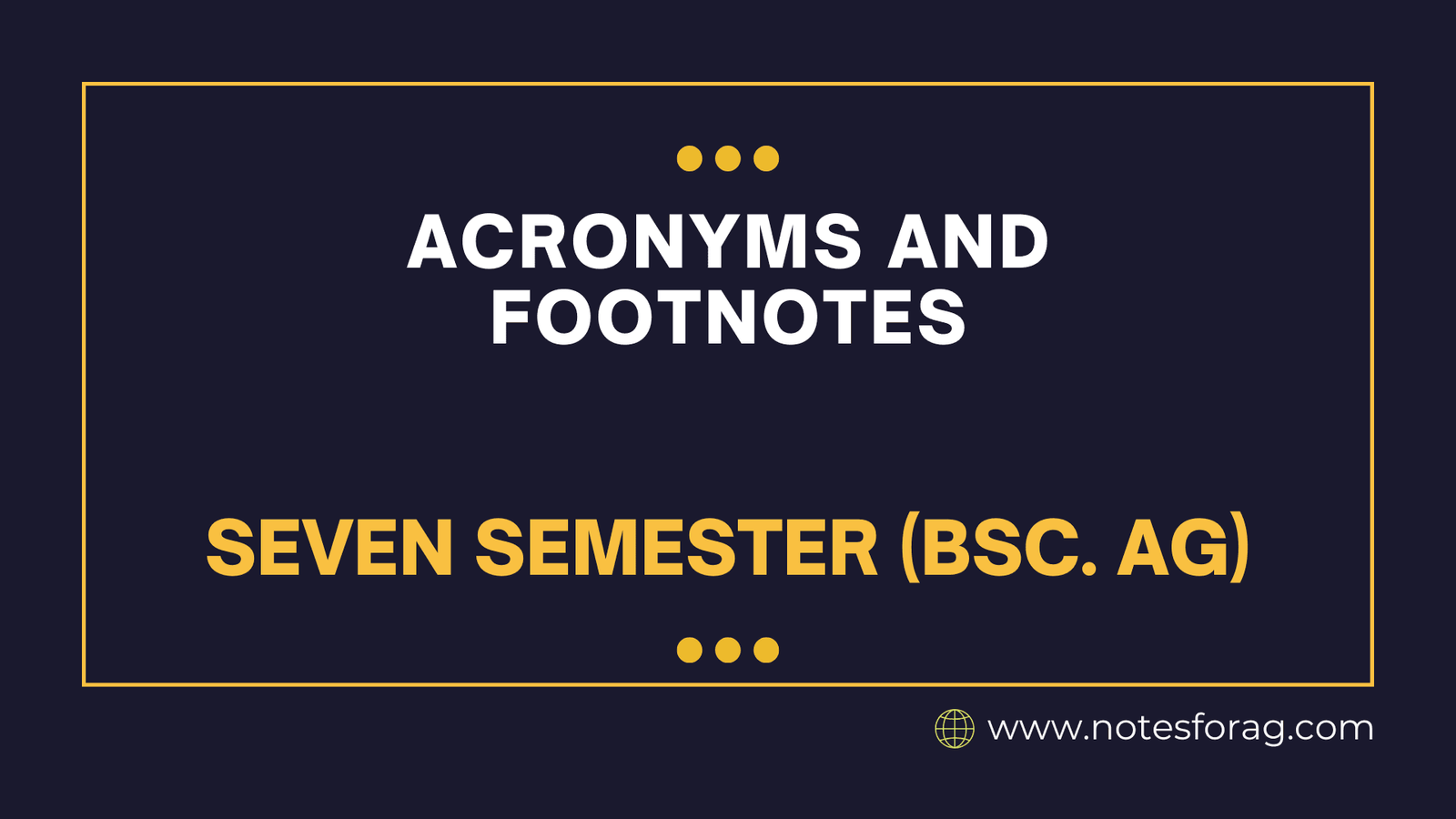Agricultural project planning involves technical language, complex data, and references that may be challenging for all stakeholders to fully grasp. Using acronyms and footnotes effectively can simplify communication, help maintain focus on key points, and ensure clarity. Here’s an overview of why acronyms and footnotes matter, how to use them effectively, and best practices for making them accessible to everyone involved in the project.
Table of Contents
Why Use Acronyms?

Acronyms are shorthand versions of long phrases. In agricultural project planning, they’re especially useful because the industry is filled with lengthy terms and specialized jargon. Some of the most common acronyms used include:
GIS (Geographic Information System): A tool for mapping and analyzing data in a geographical format, useful for planning land use or crop rotation.
ROI (Return on Investment): A metric that measures profitability, important for showing stakeholders the financial potential of a project.

BMP (Best Management Practices): Techniques proven to improve yields or sustainability, often used to ensure optimal crop production.
NPK (Nitrogen, Phosphorus, Potassium): Key nutrients essential for plant growth, often referred to in fertilization planning.
Using these acronyms can save space in reports, reduce repetition, and improve readability. However, they should always be clearly defined the first time they appear in a document to avoid confusion.
Benefits of Using Footnotes
Footnotes are valuable for providing additional information or sources without disrupting the main text flow. In agricultural project planning, they serve several functions:
Adding Context
Footnotes allow for brief explanations that can clarify technical terms or provide background on data sources.
Citing Sources
They are useful for referencing data, allowing readers to access the original research or reports behind statistics used in the project.
Supporting Transparency
By providing access to source material, footnotes create a transparent foundation, which is essential for trust and credibility among stakeholders, especially when dealing with sensitive topics like finances or environmental impact.
Practical Examples of Acronyms and Footnotes in Use
Imagine a report detailing crop yields, environmental impact, and financial forecasts for a new agricultural project. Here’s how acronyms and footnotes could be used to improve clarity:
Acronym Example: A sentence might read, “By using BMP strategies, we have seen improved crop resilience and a 20% increase in yield.” Here, BMP replaces “Best Management Practices,” making the text cleaner.
Footnote Example: A statement such as, “The total projected ROI for the project is 15%” might be followed by a footnote linking to an in-depth financial analysis that breaks down the factors influencing ROI.
Best Practices for Using Acronyms and Footnotes
To maximize clarity and effectiveness, follow these guidelines when using acronyms and footnotes:
Define Acronyms on First Use
In any document or presentation, always spell out each acronym the first time it appears, followed by the acronym in parentheses. For instance, “The use of Geographic Information Systems (GIS) has transformed land-use planning.” Once defined, the acronym alone can be used for the rest of the document.
Keep Footnotes Simple
Footnotes should be brief and directly related to the content they’re supporting. Long or overly complex footnotes can distract from the main points, so it’s best to focus on concise, valuable additions that help clarify the text.
Use Plain Language
Not everyone involved in the project will have a background in agricultural science or finance. When defining acronyms or writing footnotes, avoid jargon and explain terms in straightforward, everyday language. For example, instead of saying “The ROI metric provides insight into the profitability ratio,” a simpler version might be, “ROI shows how much profit a project is expected to make.”
Limit Acronym Overload
Using too many acronyms can be confusing, even if each one is defined. Try to limit their use to the most essential terms, especially in presentations or summary documents. This ensures that the content remains accessible and clear.
Place Footnotes Where They’re Most Useful

In a report, footnotes should appear on the same page as the information they support. In digital presentations, they can be included as pop-up notes or hyperlinks. If the project involves multiple lengthy footnotes, consider using an appendix where readers can find all supplementary information in one place.
Making Acronyms and Footnotes More Accessible
In addition to defining terms and using clear language, it can help to include a glossary of acronyms and key terms at the end of the document. This allows readers to quickly refer back to unfamiliar terms without losing track of the main content.
For projects presented to a broader audience, consider creating an “FAQ” or “Terms to Know” section that briefly explains all acronyms, key terms, and concepts used in the project. This can make the information accessible to everyone, from policymakers to farmers, ensuring a shared understanding.
Conclusion
Acronyms and footnotes, when used thoughtfully, can simplify complex agricultural project documents and presentations. By defining acronyms, keeping footnotes brief, and focusing on clarity, project planners can improve communication, support transparency, and help stakeholders better understand the project’s goals and potential. This builds trust, encourages engagement, and ensures that everyone involved is on the same page.
Frequently Asked Questions (FAQ)
When should footnotes be used?
Use footnotes when you need to provide context, source citations, or extra detail that would otherwise clutter the main text. Keep them short and relevant, so they add value without distracting from the main message.
Why are acronyms used in agricultural project planning?
Acronyms save space and make complex language more concise. They help simplify terms that would otherwise be long and repetitive, such as using GIS for Geographic Information System, ROI for Return on Investment, and BMP for Best Management Practices.
Related Articles

